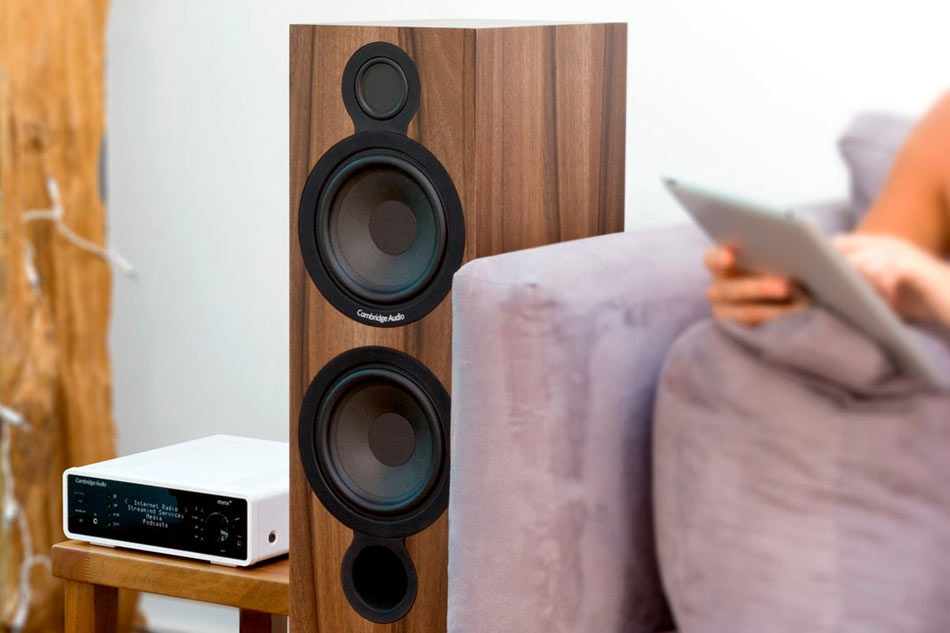With seemingly unlimited speakers available, you can select one for almost any purpose or location conceivable. Portable Bluetooth speakers, computer speakers, outdoor speakers, and automotive speakers are just a few examples. But in this article, we’ll take a deeper look at floor speakers, which serve a less evident purpose.
If you’re new to the world of electronics, you might be wondering what floor speakers are. They don’t come out from the floor like devices in a superhero’s hidden lair if that’s what you were expecting, but they can amp up the sound effects in a superhero movie.
There are numerous top rated floor standing speakers available in the market. Whatever is your budget, you can easily purchase one from the options available.
WHAT ARE FLOOR-STANDING SPEAKERS?
Floor speakers, also known as floor-standing or tower speakers, are designed to be used in conjunction with your home theatre system. They’re large compared to most speakers, standing a few feet tall and put straight on the floor like furniture.
These fixed speakers are meant to flank the TV and operate best in pairs. They’re best suited for medium- to large-sized rooms. They may be used as stand-alone devices or as part of a surround sound system, but they must be connected to a receiver in both cases.
As the name suggests, Floor standing speakers are speakers designed to be put on the floor. To produce a strong soundstage, floor-standing speakers must be roughly the same height as a person or slightly shorter, so they take up a lot of space.
Because floor-standing speakers are bigger than other speakers, they are frequently more costly and have a more intricate design. You may have to look for these speakers in a specialized audio store, or you may have to search for them online to ensure that you get the right ones.
Since they are around the same height as a moderately sized TV on top of a stand, floor standing speakers are frequently used in home theatre installations. Because these speakers can be put next to your home theatre without the requirement for installation, you may avoid paying expensive installation fees in the first place.
While floor standing speakers normally offer a good range due to the use of many driver types, you may have to cope with some jumbled sounds. The mids and lows of floor-standing speakers are frequently problematic, although the highs are extremely clear.
Aside from their availability, floor-standing speakers are recognized for their versatility since they may be used for various sorts of entertainment. Floor standing speakers, for example, are ideal for listening to music or viewing movies.
Now, before getting to know about the working of a floor-standing speaker, check out the list of the top rated
HOW DO A FLOOR-STANDING SPEAKERS WORK?
We’ve already discussed how speakers function, but in this part, we’ll condense the material to make it easier to grasp for the casual reader. The first need for a speaker to function is an electrical current designed to match an acoustic signal.
When this acoustic signal is sent to the speaker in the generation of energy, it will agitate the coil in the drivers. Because of the force of magnetic induction, the energy flowing through the coil causes it to move (since it is located between the poles of a fixed magnet).
Because the spider connects the coil to the speaker’s diaphragm, and thus every movement of the coil is magnified and communicated to the diaphragm. When the diaphragm moves, it generates sound waves, where the noise from a speaker originates.
COMPARISON WITH OTHER SPEAKERS
Floor speakers are intended to improve the audio quality of your movie, music, or television viewing experience. They provide more accurate surround sound than a soundbar system but do not have many features. These tower speakers perform nearly the same function as bookshelf speakers, but they provide greater volume and bass due to their larger size.
Some smaller speakers, such as soundbars and satellites, lack bass without including a subwoofer. Because your floor speakers are powerful and capable of creating deep tones on their own, you won’t require a subwoofer.
However, floor speakers are not without flaws. They are more powerful than other sorts, but they take up more surface space in your room. Some can weigh up to 50 pounds, which is worth considering if you need to relocate them. They may also be rather expensive, with prices ranging from a few hundred dollars to $1,000 per speaker.
Floor speakers are ideal for audiophiles and moviegoers who have extra space in their houses. They’ll go well with a big-screen TV and provide enough sound. They’ll do the job if you want powerful, bass-heavy audio that spreads around the room — especially if you connect them with a center speaker and rear speakers to build a comprehensive home theatre system.

CONCLUSION
Floor standing speakers are not only cheaper than the professional setups but also require little installation. With a decent range and volume of the speakers, floor-standing speakers prove to be an epitome for amplifying music.














